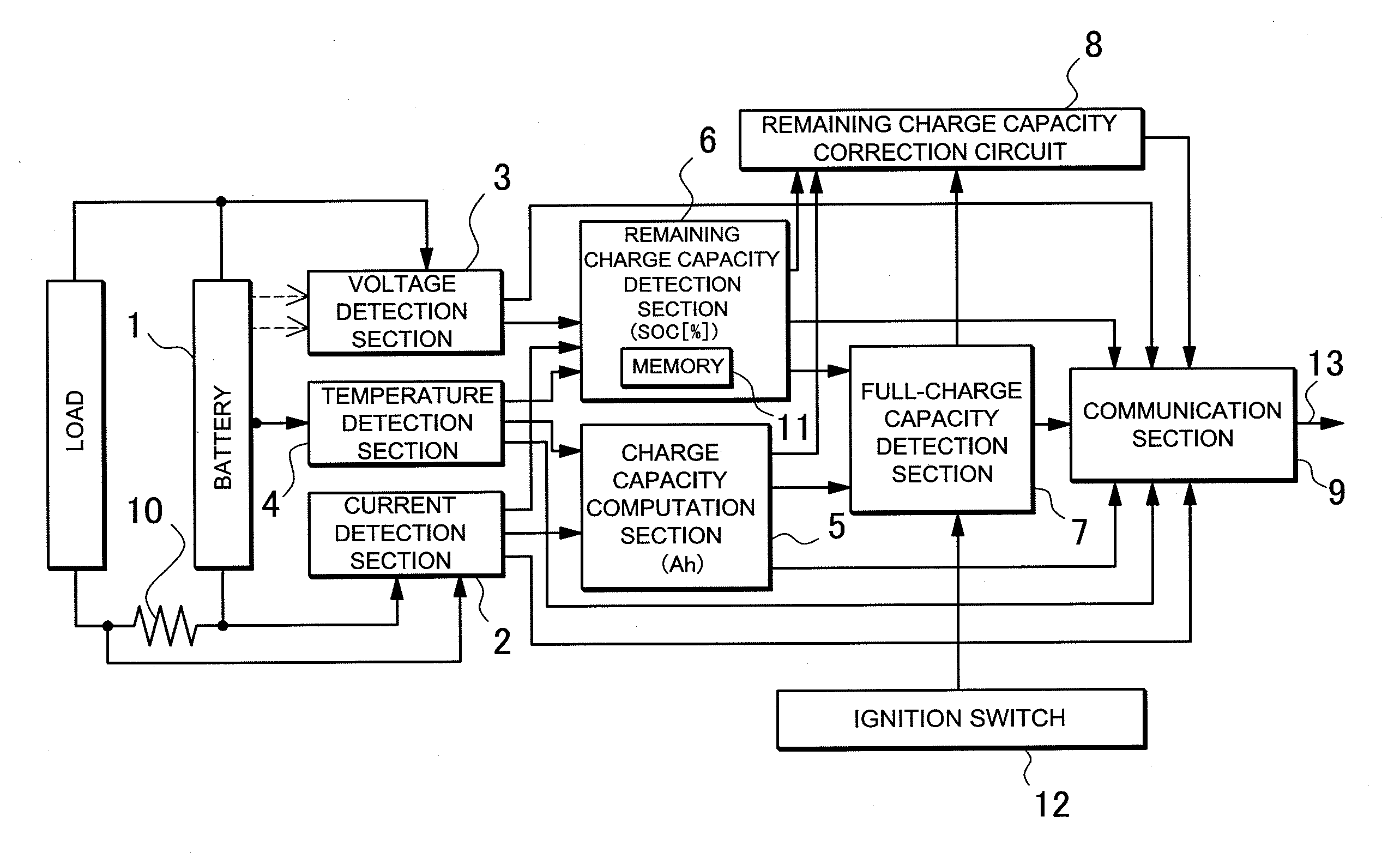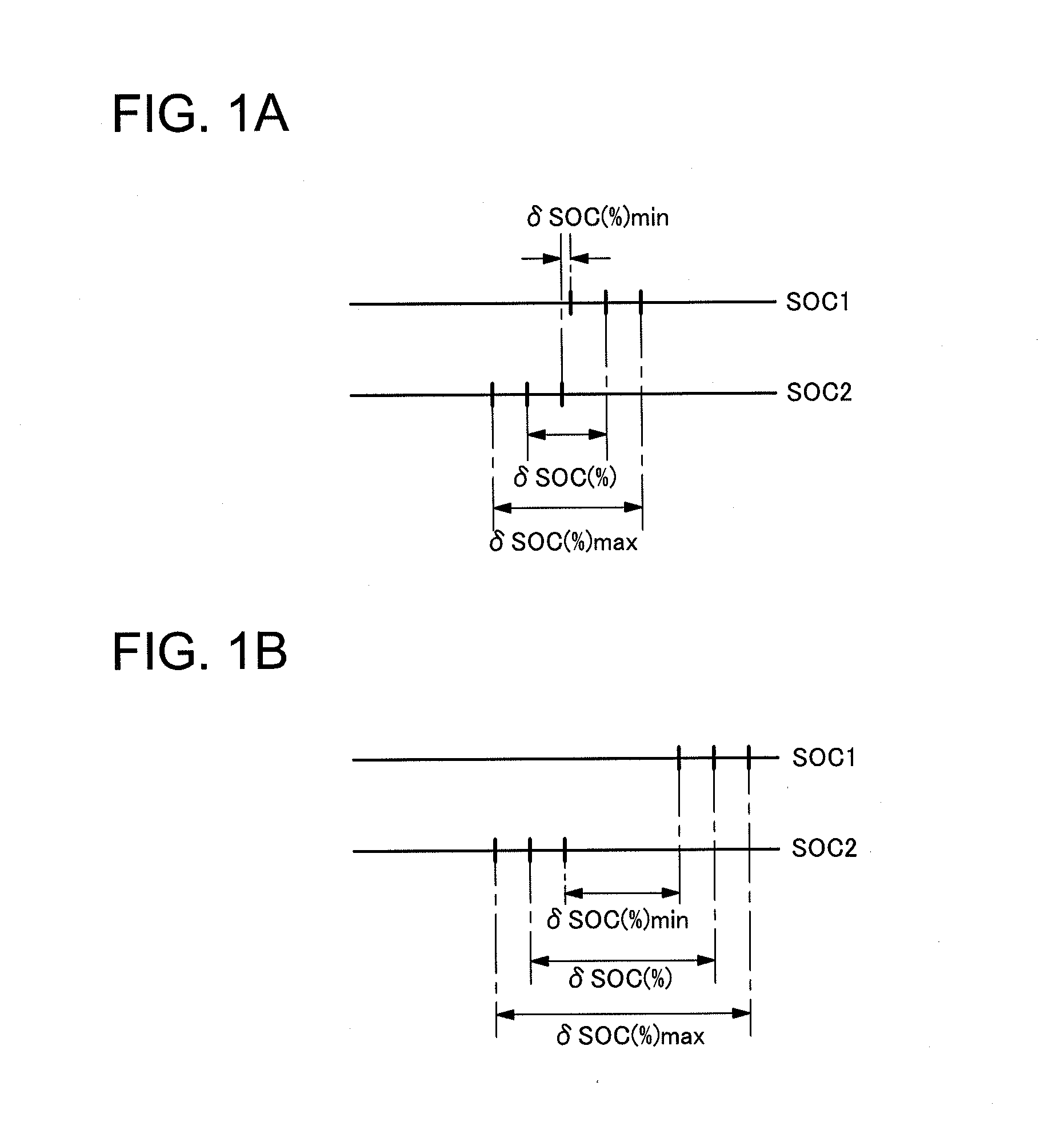Method of detecting battery full-charge capacity
a full-charge capacity, battery technology, applied in secondary cells, battery servicing/maintenance, instruments, etc., can solve the problems of severe restrictions imposed on the battery operating environment, no power can be supplied to the battery, and significant degradation, so as to achieve more accurate detection, more accurate determination of full-charge capacity (ahf), and improved detection accuracy
- Summary
- Abstract
- Description
- Claims
- Application Information
AI Technical Summary
Benefits of technology
Problems solved by technology
Method used
Image
Examples
Embodiment Construction
[0049]The following describes embodiments of the present invention based on the figures. However, the following embodiments are merely specific examples of a method of detecting battery full-charge capacity representative of the technology associated with the present invention, and the method of detecting full-charge capacity of the present invention is not limited to the embodiments described below. Further, components cited in the claims are in no way limited to the components indicated in the embodiments.
[0050]FIG. 2 is a circuit diagram of a power source apparatus used in the method of detecting battery full-charge capacity of the present invention. This power source apparatus is used to supply power to a motor and drive a vehicle, or is charged by solar cells during the daytime and used to output the stored power during either the daytime or nighttime. The power source apparatus is provided with a battery 1 that can be charged, a current detection section 2 that detects battery...
PUM
 Login to View More
Login to View More Abstract
Description
Claims
Application Information
 Login to View More
Login to View More - R&D
- Intellectual Property
- Life Sciences
- Materials
- Tech Scout
- Unparalleled Data Quality
- Higher Quality Content
- 60% Fewer Hallucinations
Browse by: Latest US Patents, China's latest patents, Technical Efficacy Thesaurus, Application Domain, Technology Topic, Popular Technical Reports.
© 2025 PatSnap. All rights reserved.Legal|Privacy policy|Modern Slavery Act Transparency Statement|Sitemap|About US| Contact US: help@patsnap.com



